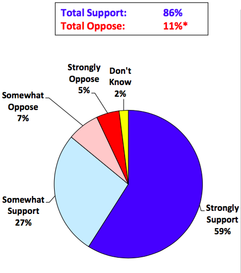
by Jill Cliburn
No surprise, we’ve heard some nervous rumblings from community-solar program managers during the dawning days this new year. They want to know three things: Will the market for community-scale solar continue to grow? How can they gauge the market across their particular communities? And are there any new insights about how to design and sell community solar for particular customer groups? While nobody has a perfect crystal ball, we’re finding that ours has been pretty good so far. We predicted these questions, anyway, and released a new guide last December to answer two out of three of them. On the third question, I’ve got some new findings about customer attitudes across the political spectrum to share with you here.
Regarding the market outlook, of course, community solar is still on list of Top Trends in energy (along with our other favorites, like solar-plus strategies), at places like Forbes, despite some, mostly regulatory, hurdles ahead. In addition, after the presidential election last fall, Public Opinion Strategies polled a cross-section of 1,000 Americans for their preferences and opinions on energy, reporting results with about a 3% margin of error. I first saw the encouraging findings reported along with some other good market research data, on Green Tech Media. Then I went to the source. That poll was sponsored by the Conservative Energy Network and their constituent groups, and I found a surprising depth of information there, including a region-by-region breakdown. In short, strong support persists for solar and other clean energy strategies in all regions of the country. On the question of whether different energy sources need more policy emphasis, less emphasis, or the same, solar leads, with 76% of all respondents calling for more emphasis. Wind and hydro are not far behind. Among those who identified as “very conservative,” 50% still believe solar needs more policy emphasis, just ten points behind natural gas; among Trump voters, solar led (61% calling for more emphasis), followed by hydro, wind, and natural gas.
Most Americans, Polled After the Election,
Want the U.S. to Accelerate
Development and Use of Clean Energy
This brings us to the second question: How does the local solar program manager actually use these findings? That’s where the Community Solar Value Project’s new guide comes in. Market Research and Market Segmentation for Community Solar Program Success (December 2016) offers a five-step process, for locating and assessing available data and supplementing it with a modicum of original market research, to be sure your local community solar program is properly tuned. The guide cites additional, national market-research sources, including detailed research on community solar from the Shelton Group and Smart Grid Consumer Collaborative. More important, it stresses the importance of market segmentation. That is, targeting likely sub-groups of interested customers with program elements and messaging that are meaningful to them. Even when you know that people are inclined toward a program concept, it is important to address their particular interests and concerns.
That leads me to address the third question of the day: Are there any new insights about how to design and sell community solar for particular customer groups? Our guide, just mentioned, goes into some detail about one approach—using information from market segmentation services, such as Prizm and the E Source Solar Customer Project, to predict which customers (who currently have no experience with community solar) are likely to respond, and to tweak each offer to the groups you care about. Lead author Jennifer Mitchell-Jackson, of Grounded Research, notes that many utilities have obtained market segmentation data for projects and programs that solar program managers wouldn’t know about, unless they ask. In our guide, Mitchell-Jackson offers specific tips on how to do that—and more.
My own insight on this question of how to approach target marketing comes from long experience as a program designer, program evaluater, and cross-departmental gadfly. I find that utilities are more successful when they embrace diversity in their solar strategies and overall energy services program menus, as well as in their messaging. It is encouraging to know that some type of community solar program could be embraced by 90% of all customers—but it is practically irrelevant to worry about that level of participation. In most utilities, a program that attracts 2 to 5% of all customers could be worthwhile (as we’ve seen with previous green power marketing programs). A community solar program that appeals to customers in a targeted neighborhood or a targeted stakeholder group could be more important, in the end, than a mass-marketed program. This is especially true in trying to reach sub-groups of Millennials, who hold the key to utility longevity in the 21st Century.
In a nod to Shelton’s latest report, Playing the Planet Card, I would also suggest that a targeted program aimed customers (often found among “young family” segments or subsets of women) who are highly motivated by environmental concerns could pay off significantly, even at a time when the general tenure of the country is to ease up on environmental policies. True, the utility also might want to offer options for customers who are laser-focused on savings or convenience, or on keeping up with the high-tech Joneses, or whatever. At most utilities, the path to success is direct and fairly simple: get to know your customers, and focus on win-win solutions for their specific needs.

